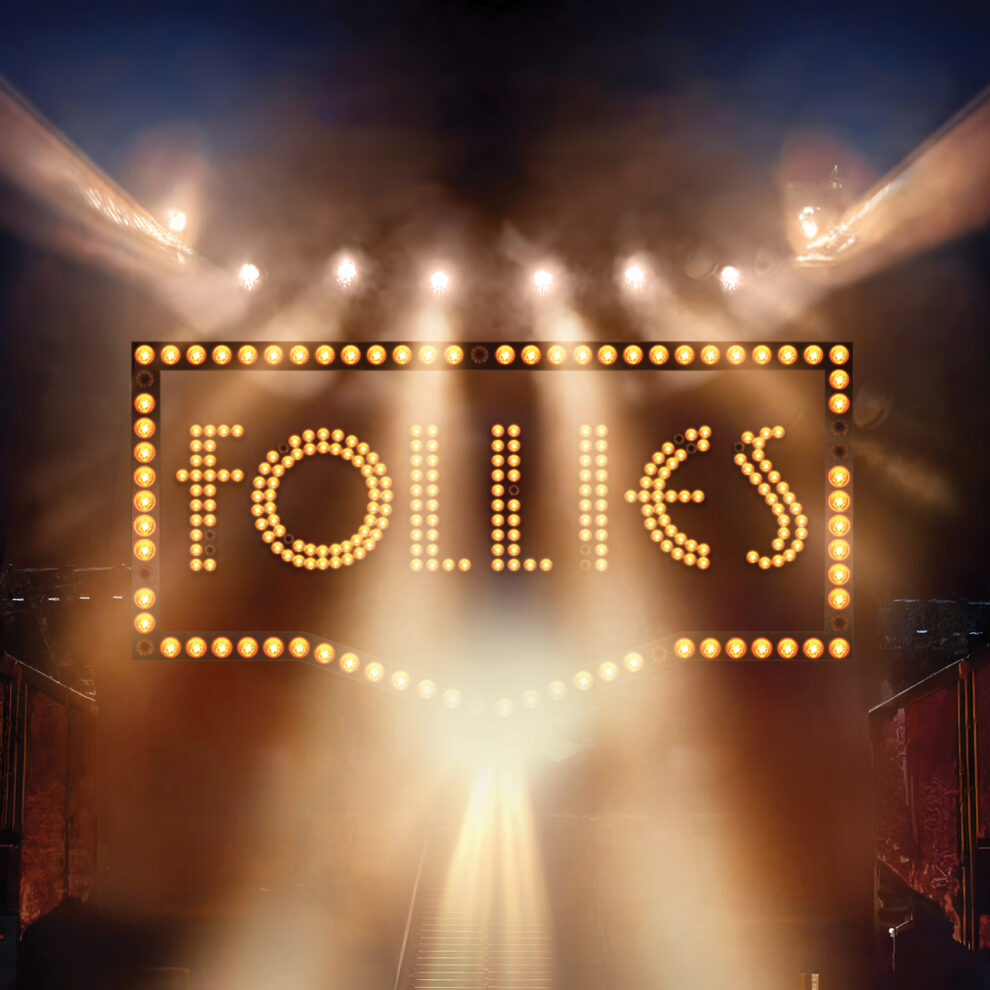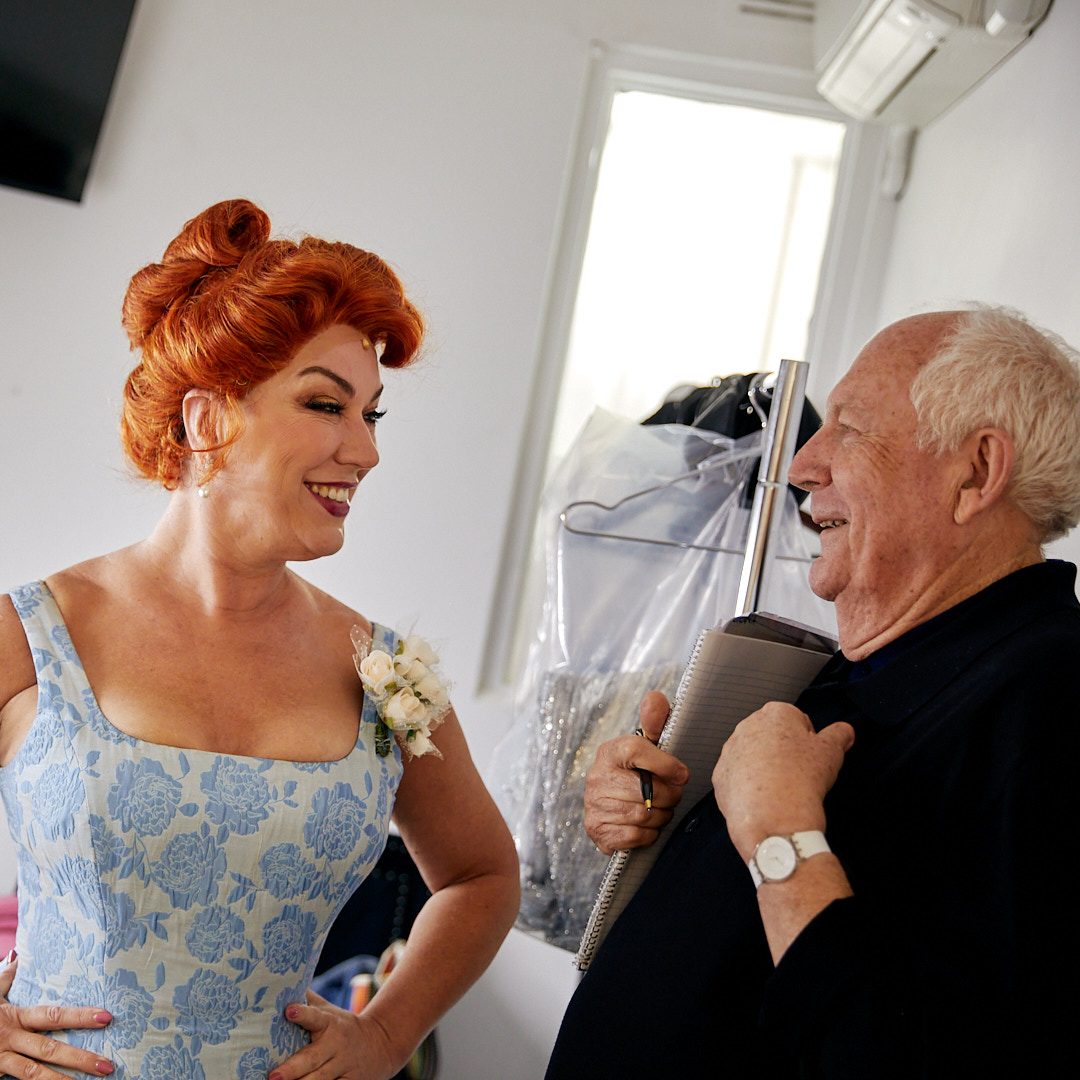
Roger Kirk: ‘Follies is probably a designer’s dream’
Ahead of Follies in February, we spoke to Tony Award-winning set and costume designer Roger Kirk about his long and revered career, and his advice for aspiring designers.
If you’re lucky enough to work with Roger Kirk, you know your show will be a hit. Roger Kirk is an internationally renowned set and costume designer, and a household name in the world of Australian theatre.
His designs have been featured in everything from Hugh Jackman’s The Boy from Oz to King Kong: The Musical to Jesus Christ Superstar. In fact, Roger is one of few Australians to have won a Tony Award, which he received in 1996 for his costumes for The King and I.
Most recently for Victorian Opera, Roger transformed Arts Centre Melbourne’s Playhouse into the dirty underbelly of 19th Century London for Sweeney Todd. Now, he’s swapping blood and gore for sequins and feathers for our glamorous upcoming production of Follies.
“This is a quintessential musical,” Roger says. “It’s got intrigue with love affairs. It’s got glamour with many numbers. You’ve got fabulous Stephen Sondheim music. I mean, it is the musical of musicals.”
Follies, by Stephen Sondheim and James Goldman, centres on former showgirls as they reunite in a crumbling theatre scheduled for demolition. With iconic showtunes and an all-star cast, the musical explores themes of youthful vigour, unfinished business and a healthy dose of cynicism.
“Follies is probably a designer’s dream, because you’re not only designing characters who had been showgirls in their day, you also get to design characters who are ghosts of the showgirls,” Roger says.
“It’s a sort of Follies within the Follies and about creating a spectacle – you don’t often get that sort of opportunity at all.”
We spoke to Roger about his creative process, his advice for aspiring designers, and what it was like to win that coveted Tony Award.
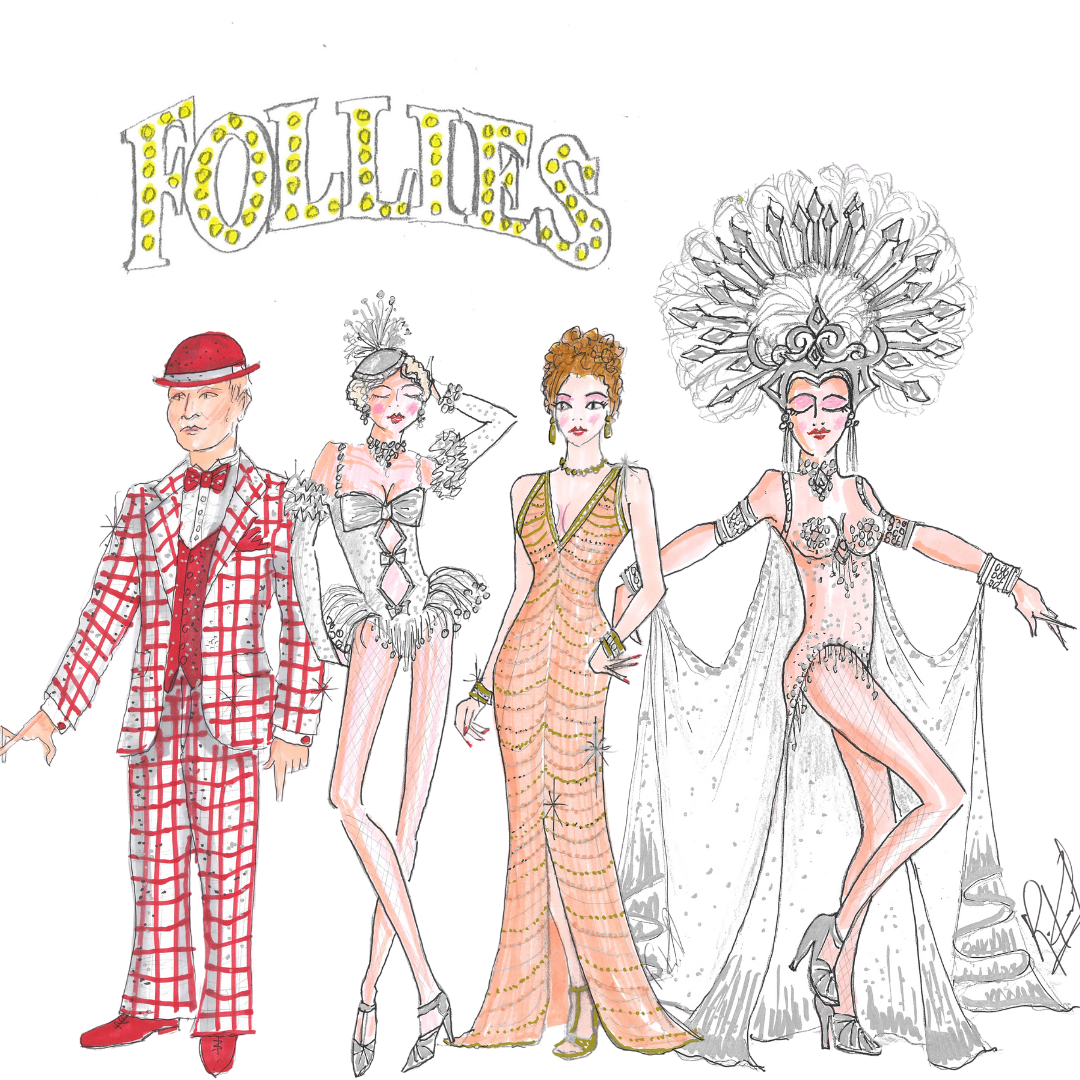
What were some of the inspirations for the Follies costumes?
Well, you try to put characters into each person. For example, Geraldine Turner is playing Carlotta Campion – she’s done everything and she’s a movie star, so you know she needed to be glamorous. Geraldene Morrow sings ‘Broadway Baby’, but I tried to keep her plainer because then when she belts out this big number, it becomes more of a surprise. I try to figure out all those pieces to enhance the characters.
Have you ever seen a fully staged production of Follies?
Yes, I have. I saw the London production in the 1980s. I’m not sure what date it was, but it was by Cameron Mackintosh and had Eartha Kitt singing ‘I’m Still Here’.
I mean she hardly lifts a finger but she’s riveting. And you believed every word she said. It was very amazing.
Can you talk us through your design process?
You can’t do any play, I don’t think, without doing some sort of research, whether it be musical or opera, modern or period piece.
For example, if it’s meant to be set in the 1920s or 1930s, then you’ve got to start at what people wore during that time. Even if you’re doing a modern version of a period piece, you still need to go back to where it all started – you still need to find what people wore in the 1930s, and then find out what would look a bit like that in modern times.
It probably takes about a couple of months to churn out set and costumes for a show. You need to talk to the director, work out your approach, the research and then get familiar with the venue. The show might go to multiple venues, so you also need to check the floor plan will fit other places as well. There’s quite a lot involved before you actually sit down.
Is there anything quintessentially ‘Roger Kirk’ in your designs?
I guess I’m known for glam and sparkle!
What made you want to be a designer?
My family was very interested in theatre. I had two brothers and an elder sister, and we were always taken to pantomimes when we were kids. When we got older, my mother and my grandmother would take us to musicals.
Even at school, we were taken to see Shakespeare, and to the Sydney Symphony Orchestra where you’d hear an explanation of everyone’s role, what they played, and how conductor pulls it all together.
So, I guess I had a background in going to the theatre. I was intrigued by the scenery and the world they created. As a kid, it was a magic. And I wanted to learn how to create that magic.
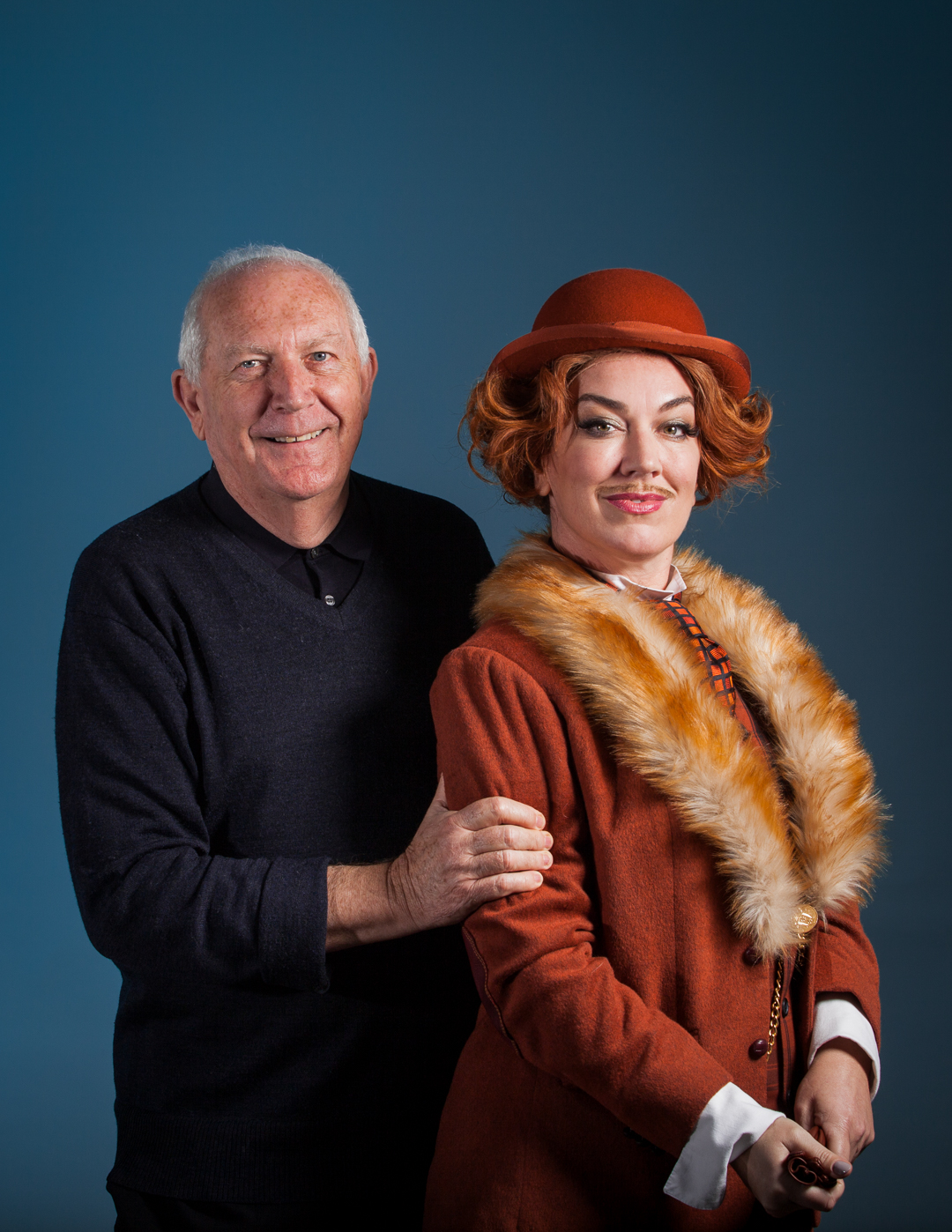
How did you get your break in theatre?
When I left school, I got a job as a stagehand at Channel 7. I then moved to England and worked backstage in the West End doing props, operating the fly, and had a great time doing all those sorts of things backstage. When I came back, I got a job as a stagehand at Channel 2 in Sydney. From there, I eventually became a designer. My first job as a designer was The Norman Gunston Show, which I took over.
My next break was designing The Marcia Hines Show. The Head of Design at the time was meant to design the show, but had booked flights to England and I said, “put my name on it”. He said, “I can’t as I’ve got other senior designers here who aren’t busy, I need to give them the job”. And I said again, “put my name on it”. He did, and I got the show. That took my career off.
I was working on the Marcia Hines Show with Ross Coleman as the choreographer. Ross and director Richard Wherrett were going to do Chicago, and it was perhaps the first time a Broadway musical was allowed to have new design and direction. I asked Ross to tell Richard that I’d love to do the costumes (I knew Brian Thomson was already doing the set). Richard gave me the job as the costume designer, and that set my career off as a theatre designer. On Chicago, I worked with Geraldine Turner for the first time as well as Nancy Hayes, and Judi Connelli. It was fantastic.
Brian and I both did The King and I in Australia. That went to America, and kicked off my international career.
You received the Tony Award for The King and I. How did it feel to win the Tony?
Well, I guess it was like a dream come true. I remember arriving in New York and Brian Thomson, who had designed the sets, and I were staying in the same hotel. When we met at the bar, he had newspapers that had Tony Award tips for who was going to win, and we were both on there. That gave us goosebumps.
I had to pinch myself, how had this happened? But I guess I was given the opportunity. And nearly all the people I worked with treated me like they treated any other. They were really good to me, and I was very lucky I had that sort of support.
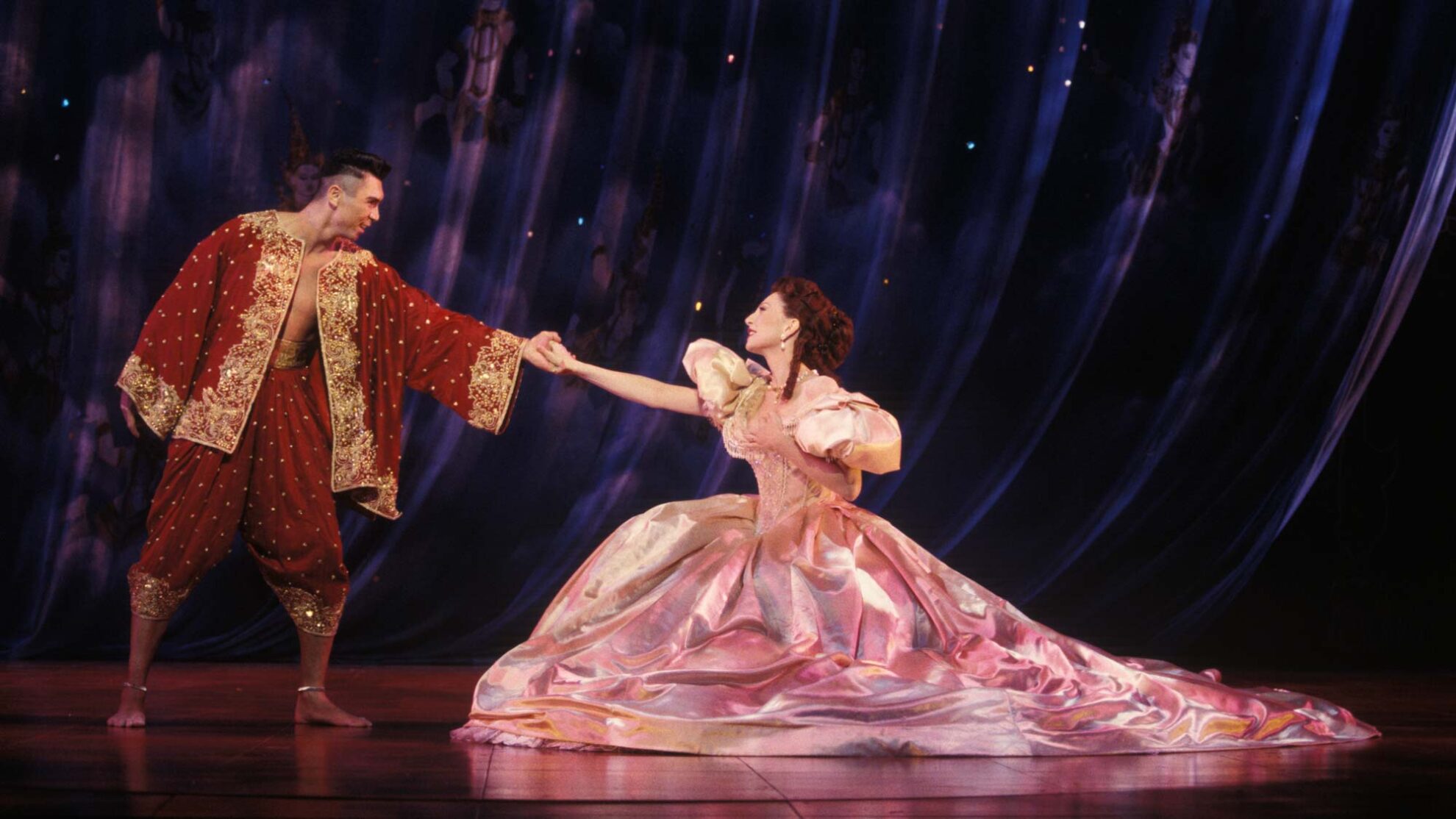
What is the very first steps in the process of designing a set?
It is down to research, but also, you need architectural skills. The set is like a building. You’ve got to draw it all up and know how it can be built. And if you don’t know how to build it, then you’ve got to work with engineers who do know how it works. There is a lot involved.
I guess people nowadays are taught how to do it on computer on CAD, where in my day it was hand drawn.
What advice would you give to a student interested in pursuing a career as a designer?
If you don’t give up, if it’s something you want to do and you pursue it, then you get rewarded. It’s difficult, but you can’t give up. And if you’re in the right spot at the right time, then the doors open.
